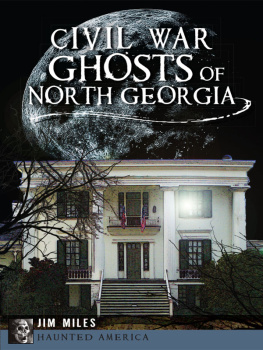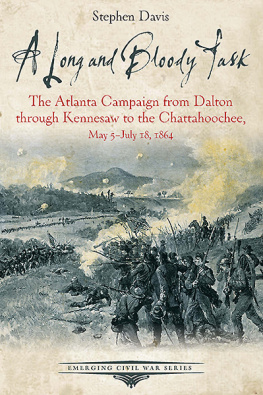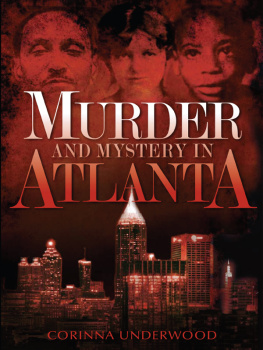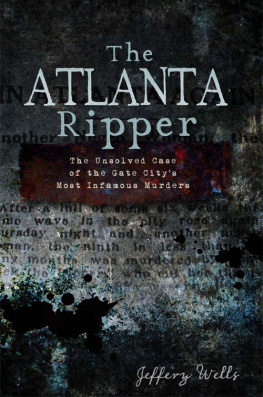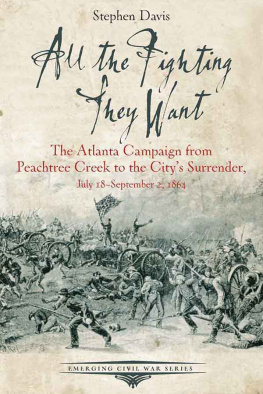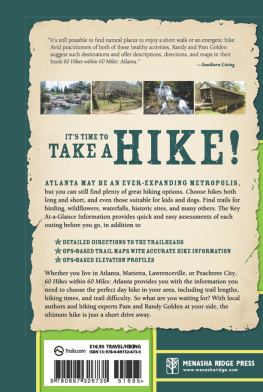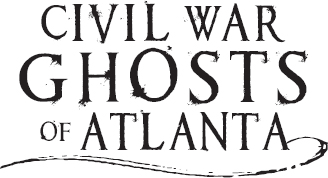

Published by Haunted America
A Division of The History Press
Charleston, SC 29403
www.historypress.net
Copyright 2013 by Jim Miles
All rights reserved
First published 2013
e-book edition 2013
Manufactured in the United States
ISBN 978.1.62584.648.8
Library of Congress Cataloging-in-Publication Data
Miles, Jim.
Civil war ghosts of Atlanta / Jim Miles.
pages cm. -- (Haunted america)
print edition ISBN 978-1-62619-190-7 (pbk.)
1. Ghosts--Georgia--Atlanta. 2. Haunted places--Georgia--Atlanta. 3. Georgia--History--Civil War, 1861-1865--Miscellanea. I. Title.
BF1472.U6M538 2013
133.109758231--dc23
2013027702
Notice: The information in this book is true and complete to the best of our knowledge. It is offered without guarantee on the part of the author or The History Press. The author and The History Press disclaim all liability in connection with the use of this book.
All rights reserved. No part of this book may be reproduced or transmitted in any form whatsoever without prior written permission from the publisher except in the case of brief quotations embodied in critical articles and reviews.
For the other Miles family: Ray, Wave, Susan, Adam and Bubba.
CONTENTS
INTRODUCTION
Federal forces made steady progress in defeating and occupying the western part of the Confederacy. Union victories at Shiloh, Perryville, Vicksburg, Stones River, Lookout Mountain and Missionary Ridge secured Tennessee and Kentucky and possession of the Cumberland, Tennessee and Mississippi Rivers, effectively severing the Trans-Mississippi from the remainder of the Confederacy and taking possession of portions of Arkansas, Louisiana, Mississippi and Alabama.
From Chattanooga, Federal generals U.S. Grant and William T. Sherman considered Atlanta, one of the Confederacys last remaining major industrial and transportation centers. Conquest of Atlanta would threaten other important portions of the shrinking Confederacy: Columbus, Montgomery, Mobile, Savannah and Charleston, as well as Augusta, Georgia, and a route north through the Carolinas to join U.S. Grant in the struggle against Robert E. Lee and the Army of Northern Virginia.
Grant decided to travel to Virginia and take personal command of the situation there, while loosing Sherman and his Army of the Tennessee on Atlanta and any subsequent targets.
Sherman was opposed by General Joseph E. Johnston and the Confederate Army of Tennessee. The opposing armies fought spirited actions at Dalton, Resaca, Adairsville, New Hope Church, Picketts Mill and Dallas. Johnston was best on defense, but Sherman had twice his numbers and flanked the Confederates, forcing them to withdraw one hundred miles to the area of Cobb County. There, Johnston found defensible terrain, and bad weather slowed Shermans forces to a crawl.
In Cobb County the major battles began, not just Kennesaw Mountain but also numerous smaller yet still sharp conflicts at Pine Mountain, Mud Creek, Gilgal Church, Kolbs Farm, Smyrna-Ruffs Mill and Paces Ferry.
Johnston hoped to hold the line at the Chattahoochee River, but Sherman skillfully crossed at Roswell and slowly began to encircle Atlanta. John B. Hood replaced Johnston, and battles erupted at Peachtree Creek, Atlanta, Ezra Church and Utoy Creek. A deadly, month-long siege of the city was followed by one more savage combat at Jonesboro, and the Confederates were forced to yield Atlanta. A final fight occurred at Lovejoys Station.
Years before Cobb County and Atlanta became a battleground, railroads brought thousands of wounded and diseased soldiers there from distant battlefields and camps. The men received care at large hospitals, where many died despite the best medical care possible at the time.
These historic events left metropolitan Atlanta haunted. Kennesaw Mountain retains much paranormal phenomena, as does the battlefield at Jonesboro. Buildings used as hospitals, including the Kennesaw House in Marietta and a former inn in Stone Mountain, contain ghosts who have yet to move on to the next realm. Ground consecrated by the blood of soldiers yields spirited manifestations, even in the most modern buildings. It seems that as the metropolis of Atlanta grows, the number of haunted spots increase. This is the story of Atlantas Civil War ghosts.
PART I
CIVIL WAR SPIRITS OF COBB COUNTY
KENNESAW
The General and the Generals Ghost
Following his failures at New Hope Church and Picketts Mill, Sherman slid back to his railroad supply line at Kennesaw, which was occupied by Federals for six months. Some say the occupiers never really departed.
The prize attraction in Kennesaw is the General, a steam locomotive involved in the Great Locomotive Chase, but it is not the only relic of the Civil War experience in town. According to Barbara Duffey in Angels and Apparitions: True Ghost Stories from the South, residents on North Main Street have reported the acoustic passage of Shermans army. It happens late on hot summer nights, when people sit on their front porches after the traffic diminishes. First, all normal sound ceasesno crickets or mosquitoes are heardand then, the clatter of horse hooves sound in the distance. Dogs bark as a troop of invisible cavalry approaches, the sound growing ever louder, and then, the tramp of innumerable marching men is heard.
A disembodied voice orders the army to halt and someone announces that General Sherman is approaching. In the sudden silence, a single horseman approaches, stops as if inspecting the area and then continues south toward Atlanta. His phantom army continues the march, the sounds of cavalry, infantry and rumbling artillery passing and dimming in the distance. A creeping coldness and fog always follow Shermans passage.

Ghosts, including that of actor Fess Parker, are experienced within the Southern Museum of Civil War and Locomotive History in Kennesaw.
Ghosts at the Kennesaw Museum
Kennesaw historian Harper Harris found the old Kennesaw Museum mighty creepy at night. I hear stuff at night all the time, he told Kathleen Walls in Georgias Ghostly Getaways:
I usually keep the radio on and try not to stay that late but in the winter it starts getting dark early. Also when the alarm goes off I have to come in here [the locomotive room] and sometimes I find stuff lying on the floor with no logical reason. You wonder, How did that get there. I know I didnt put it there. And then theres the noise. Its not like voices. Its more like thumping and scratching. One night it was real loud back in that room. I thought someone was in here. Ive never seen anything but its scary here sometimes.
The Great Locomotive Chase was one of the most daring and dramatic events of the Civil War. On April 12, 1862, a group of Union saboteurs stole the locomotive General at Kennesaw (then Big Shanty) and headed north to destroy railroad bridges on the Western & Atlantic Railroad to cut off Chattanooga from Confederate reinforcements and aid in the Federal capture of that vital transportation center.
The Generals conductor, William Fuller, chased his engine on foot, by pole car and on several different locomotives, catching up with the Raiders near Ringgold. His dedication prevented the Federals from doing significant damage to the rail line.
Next page

